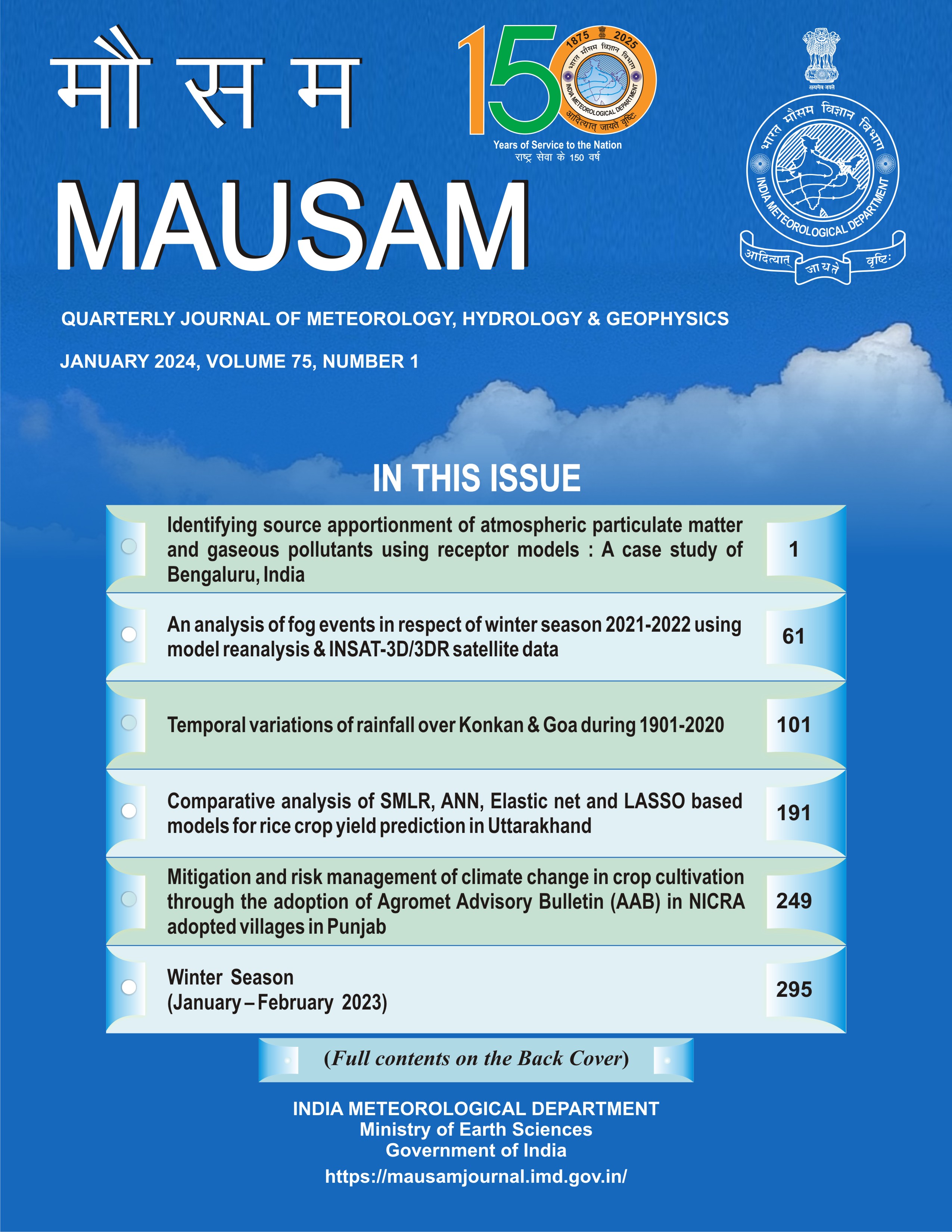Importance of PAR interception and radiation use efficiency on growth and yield of Potatoes under different microclimates in the upper Brahmaputra valley zone of Assam
DOI:
https://doi.org/10.54302/mausam.v75i1.3892Abstract
A field experiment was conducted at Assam Agricultural University, Jorhat, Assam during rabi 2018-19 for assessing the PAR interception and radiation use efficiency in potato variety Kufri Jyoti under different microclimates, which was planted in split plot design with 4 dates of plantings and three mulching treatments with water hyacinth, black polythene and without mulching. The incident, reflected and transmitted PAR were measured periodically over the crop with line quantum sensor and daily incident radiation were calculated from incident PAR and bright sunshine hours. The interception of PAR (iPAR) varied considerably among different treatments, while highest iPAR was recorded under first date of planting and mulching treatment with water hyacinth. The leaf area index (LAI) and biomass production was highest in crop planted in first date planting and grown under water hyacinth mulch. The RUE for tuber yield was highest under water hyacinth (2.35 g MJ-1) followed by black polythene (2.03 g MJ-1) and non-mulched (1.67 g MJ-1) condition, while among planting dates it was highest in case of first date of planting. The LAI, biomass production and yield of potato were found to be significantly correlated with iPAR and RUE. The predictive models were developed by using stepwise regression method to predict tuber yield from iPAR and REU, which have R2 value of 0.96 and 0.99, respectively.
Downloads
Published
How to Cite
Issue
Section
License
Copyright (c) 2023 MAUSAM

This work is licensed under a Creative Commons Attribution-NonCommercial 4.0 International License.
All articles published by MAUSAM are licensed under the Creative Commons Attribution 4.0 International License. This permits anyone.
Anyone is free:
- To Share - to copy, distribute and transmit the work
- To Remix - to adapt the work.
Under the following conditions:
- Share - copy and redistribute the material in any medium or format
- Adapt - remix, transform, and build upon the material for any purpose, even
commercially.



